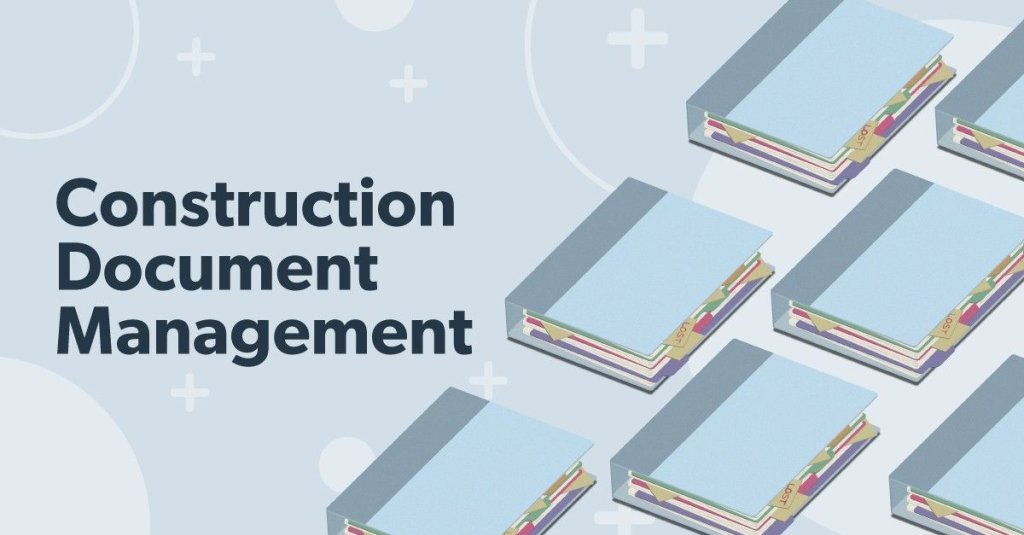Boost Your Task Management: Construction Document Management Equipment You Need
Boost Your Task Management: Construction Document Management Equipment You Need
Blog Article
Optimizing Project Collaboration: Designer's Best Practices in Building Paper Management
In the detailed realm of building jobs, the reliable monitoring of building records stands as a keystone for success. Amidst this complexity lies a crucial question: exactly how can designers improve cooperation processes to improve task outcomes?
Leveraging Cloud-Based Systems
Leveraging cloud-based platforms is an essential method for contemporary engineers in maximizing building paper management procedures. By transitioning from conventional paper-based systems to shadow services, engineers can improve collaboration, boost paper availability, and boost general task effectiveness. Cloud-based platforms use designers the ability to shop, share, and upgrade construction records in real-time, making sure that all employee have access to one of the most current information despite their location. This availability promotes smooth interaction and coordination among job stakeholders, leading to fewer mistakes and delays in the building and construction procedure.
Moreover, cloud-based systems offer a protected setting for saving sensitive project information, offering security, routine backups, and customer authorization settings to secure information stability. Engineers can additionally take advantage of the scalability of cloud options, enabling them to readjust storage space capacity and capability based on task requirements. Overall, leveraging cloud-based platforms empowers engineers to optimize their building and construction file administration processes, driving higher collaboration, efficiency, and success in their tasks.
Executing Variation Control Systems
Having actually developed the advantages of cloud-based platforms in construction document monitoring, designers can currently boost their document control procedures by executing Version Control Equipment. Variation Control Systems (VCS) are vital devices that track adjustments in documents, making certain that staff member are constantly working with the most current and most exact information. By implementing VCS, architects can maintain a centralized database where all job documents are saved, allowing seamless collaboration while decreasing the threat of errors and version disputes.
One trick advantage of Version Control Solution is the ability to track the complete history of file adjustments, allowing users to go back to previous variations if required (construction document management). This feature is particularly beneficial in building and construction projects where layout versions and modifications prevail. Furthermore, VCS promotes better communication among group members by offering a clear audit trail of that made particular adjustments and when they were made. This openness not just enhances liability but also helps in settling conflicts or discrepancies that might occur during the project lifecycle.
Establishing Interaction Methods
To make sure efficient and reliable job sychronisation, architects have to develop clear and durable communication procedures within their building record management procedures. This platform can be a job administration software application, email threads, or cloud-based storage options.
Moreover, communication methods should also include guidelines on how to take care of disputes, change orders, and urgent concerns that might occur during the job lifecycle. Developing a structured technique to interaction ensures that all stakeholders are on the very same page, promotes openness, and inevitably adds to the effective conclusion of the building and construction project.
Using BIM Software Application for Control
BIM software plays a crucial duty in enhancing coordination among job group participants in the building and construction sector. Building Information Modeling (BIM) promotes collaboration by providing a centralized system where designers, designers, service providers, and various other stakeholders can interact in a collaborated fashion. Through BIM software program, project participants see this website can access and upgrade a shared version which contains in-depth information about the structure style, building components, and job schedules.

Additionally, BIM software program enables real-time partnership and communication amongst employee, no matter of their physical place. With cloud-based BIM systems, task stakeholders can access the most up to date job details, track changes, and make informed decisions promptly. Generally, leveraging BIM software program for sychronisation improves job efficiency, efficiency, and ultimately results in successful project outcomes.
Ensuring Information Safety And Security and Conformity
In the realm of building and construction paper administration, safeguarding data integrity and ensuring governing conformity are critical considerations for architects and other project stakeholders. Designers need to execute robust safety steps to shield sensitive job information from unauthorized gain access to or breaches.

Conclusion
To conclude, engineers can enhance job collaboration in building record management Full Article by leveraging cloud-based platforms, executing variation control systems, developing interaction protocols, making use of BIM software program for sychronisation, and guaranteeing data safety and security and conformity. These finest techniques aid enhance the building and construction process, boost interaction among task stakeholders, and boost effectiveness in task delivery. By adhering to these standards, architects can properly take care of building her response and construction documents and help with effective project end results.
Through BIM software, task participants can access and update a common design that includes in-depth details concerning the building design, building elements, and project schedules.
Through cloud-based BIM systems, job stakeholders can access the most recent job details, track modifications, and make informed choices promptly - construction document management. On the whole, leveraging BIM software application for sychronisation enhances task effectiveness, performance, and inevitably leads to effective task end results
In final thought, designers can optimize task partnership in building and construction file management by leveraging cloud-based systems, applying variation control systems, establishing communication protocols, using BIM software program for coordination, and guaranteeing information protection and compliance. These ideal techniques help enhance the building and construction process, improve interaction amongst job stakeholders, and enhance effectiveness in project distribution.
Report this page